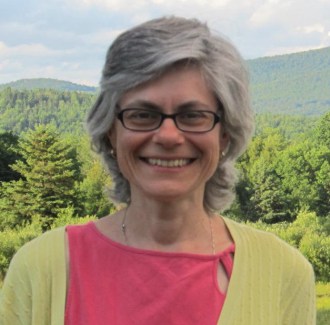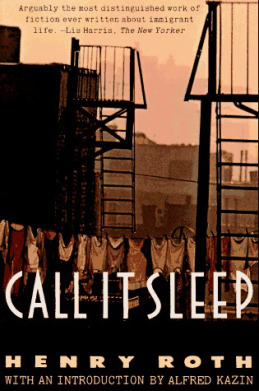 My name is Gail Schechter. I am a co-founder of the newly launched Addie Wyatt Center for Nonviolence Training in Chicago, aiming to create a culture of peace in the region starting with our city and suburban high schools, including Evanston Township High School. From 1993 to 2016, I served as Executive Director of Open Communities, the north suburban Chicago area’s housing, economic and social justice organization. By appointment of former Governor Pat Quinn, I sit in the “affordable housing advocate” seat of the State Housing Appeals Board, the enforcement body for the Affordable Housing Planning and Appeal Act whose passage, I am proud to say, was led by north suburban elected officials. I also serve on the Board of Directors of Chicago Area Peace Action. I have taught graduate courses in public policy and civic engagement for Northwestern University’s School of Professional Studies. Most recently, I authored the definitive history of the North Shore Summer Project and its evolution into Open Communities for The Chicago Freedom Movement: Martin Luther King Jr. and Civil Rights Activism in the North. I was born and raised in New York City and have two children. While most people know me as a community organizer and fair and affordable housing advocate, I’m also an active clarinetist – and an avid reader.
My name is Gail Schechter. I am a co-founder of the newly launched Addie Wyatt Center for Nonviolence Training in Chicago, aiming to create a culture of peace in the region starting with our city and suburban high schools, including Evanston Township High School. From 1993 to 2016, I served as Executive Director of Open Communities, the north suburban Chicago area’s housing, economic and social justice organization. By appointment of former Governor Pat Quinn, I sit in the “affordable housing advocate” seat of the State Housing Appeals Board, the enforcement body for the Affordable Housing Planning and Appeal Act whose passage, I am proud to say, was led by north suburban elected officials. I also serve on the Board of Directors of Chicago Area Peace Action. I have taught graduate courses in public policy and civic engagement for Northwestern University’s School of Professional Studies. Most recently, I authored the definitive history of the North Shore Summer Project and its evolution into Open Communities for The Chicago Freedom Movement: Martin Luther King Jr. and Civil Rights Activism in the North. I was born and raised in New York City and have two children. While most people know me as a community organizer and fair and affordable housing advocate, I’m also an active clarinetist – and an avid reader.
1) Where Do We Go From Here?: Chaos or Community by Dr. Martin Luther King, Jr. (1968)
This year I read all five of Dr. Martin Luther King, Jr.’s books starting with his first, Stride Toward Freedom, his description of the Montgomery bus boycott that launched the Civil Rights Movement, Rosa Parks as the catalyst for this major nonviolent direct action led by African Americans, and Dr. King himself into national prominence. Where Do We Go From Here? is his last complete book and a work of profound wisdom about racial reconciliation that resonates today. Dr. King writes from the vantage point of distress about white backlash to freedom movement gains; African American anger that manifested itself in the Black Power Movement; and the tragic eclipsing of a unified, national push for anti-poverty programs by the Vietnam War. If anything, toward the end of his life Dr. King was even more convinced of the power of nonviolence. He presented our national challenge as a choice between “nonviolent coexistence” or “violent coannhiliation.” He could have been describing himself when he wrote, “Ultimately, a genuine leader is not a searcher of consensus but a molder of consensus.”
2) The Geography of Nowhere: The Rise and Decline of America’s Man-Made Landscape by James Kunstler (1993)
Facilitated by his excellent narrative style and humor, Kunstler’s The Geography of Nowhere is a readable, essential history, analysis, and indictment of our nation’s car culture. He traces this culture back to the white settlers of colonial times who proclaimed “property ownership as the keystone of liberty,” ever waving the banner of “Don’t tell me what to do with my land!” If we want to turn our suburbs into communities rather than collections of gated sub-divisions, and if we want to learn to venerate rather than “sprawlscape” our land, this book gives us a framework for creating stable, humane places in which to thrive.
 3) Call It Sleep by Henry Roth (1934)
3) Call It Sleep by Henry Roth (1934)
Call It Sleep contains some of the most beautiful prose in the English language, especially remarkable since author Henry Roth, like his eight-year-old protagonist, was born in Eastern Europe, spoke Yiddish as a first language, and immigrated to New York City’s impoverished Lower East Side in the first decade of the 1900s. Although the main characters are Jewish, the novel is an evocative and rich portrayal of immigrant family life generally and the search for meaning in the midst of misery. The storytelling is so gripping that the main character’s adventures in Hebrew school, evasions from his menacing father, and interactions with street children have the feel of an epic adventure. The relationship between young David and his saintly mother is an exquisitely moving story of redemption, among the only glimmers of humanity. New York City itself, as reflected in his wanderings, has a surreal quality: “At Avenue B, the open stretch of the park lay before him and beyond in the distance, the city’s towers pried chiseled edges between spume and clarity.”
A fitting companion to this novel is the less well-known Bread Givers, a novel by Anzia Yezierka, written in 1925, and could be considered a female perspective of the same time and place. Yezierka movingly expresses similar personal pain and rebellion against cultural traditions that oppressed wives and daughters.
4) Conquest of Violence: The Gandhian Philosophy of Conflict by Joan Bondurant (1958)
When my friend and colleague Sherri Bevel shared with me this past spring that her father, civil rights leader James Bevel, told her that the two most essential books were the Bible and Joan Bondurant’s Conquest of Violence, I immediately got my hands on the Bondurant study (already having a Bible). Any individual interested in nonviolence as a practice for systemic change should read this history and analysis of Gandhi as a theoretician and practitioner – the man singularly responsible for forging a movement that ousted the British from India in the name of freedom and self-determination. Bondurant, an American who met Gandhi, dissects Satyagraha, or “truth-force”, whose centerpiece is the refusal to do harm, and analyses how it operated in five campaigns. Bondurant finds that the most compelling aspect of Satyagraha is how it operates as a living, powerful process. “What political man needs is not a noble end, but constructive, creative means.” This is true meaning of Gandhi’s famous dictum that we must be the change we wish to see.
5) Diaries and Letters by Kaethe Kollwitz, edited by her son Hans Kollwitz (1955)
I picked this book up in June at a used book store in Kingston, RI near the University of Rhode Island, where I participated in the International Summer Nonviolence Institute. Kollwitz is one of my favorite artists. I am moved by her compassionate drawings and prints of working class people (she was a socialist) and anguished mothers during wartime. Kollwitz was also an activist who stood up against Nazism and war. This compilation, which includes images of her work, allows the reader to understand her life, challenges as a sculptress, and quest for “joy as the equivalent to strength.” Her younger son was a soldier killed during WWI; and striving to make her life meaningful following his meaningless death was her calling in the second half of her life. “I am content that my art should have purpose outside itself. I would like to exert influence in these times when human beings are so perplexed and in need of help.”
